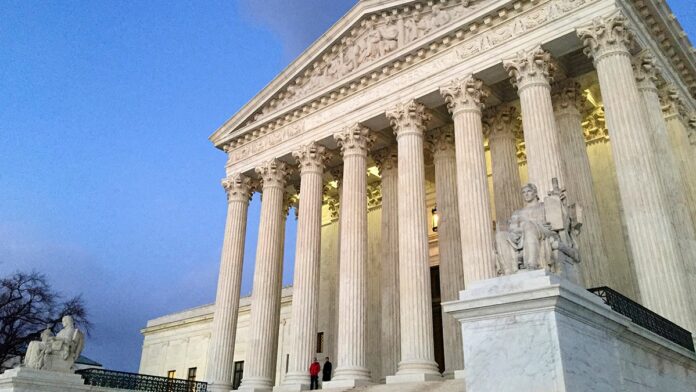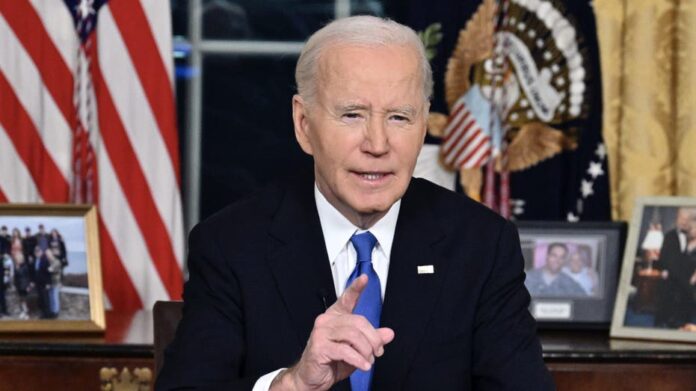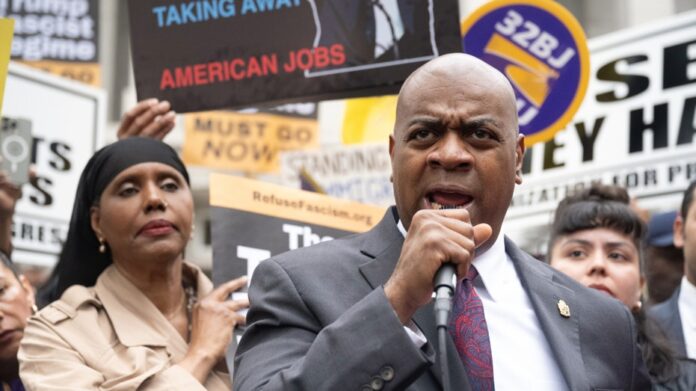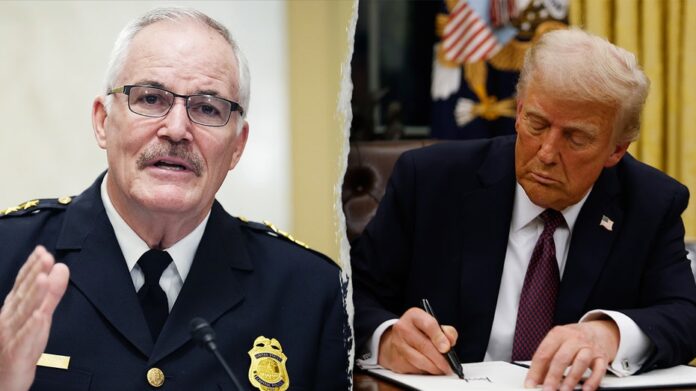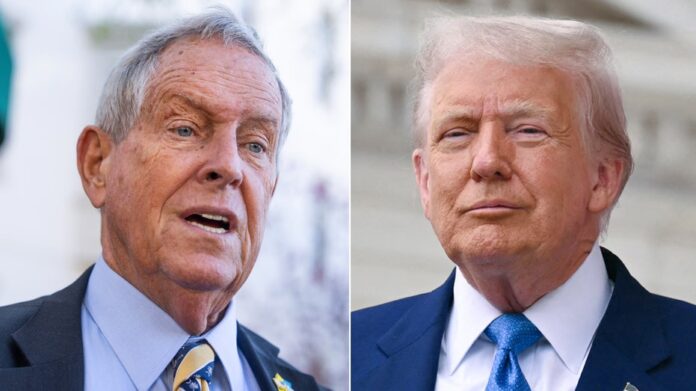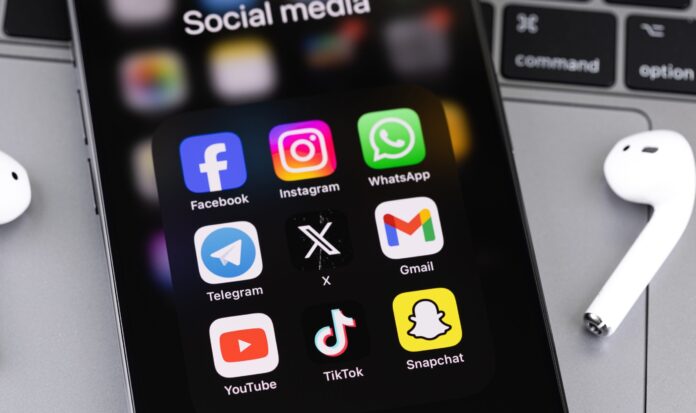Former President Joe Biden‘s official health reports during his White House tenure did not show signs of aggressive prostate cancer, a Fox News Digital review of the health documents shows.
Biden, who suffered two brain aneurysms in 1988 that nearly claimed his life, received clean bills of health in 2021, 2023 and 2024, according to former White House physician Dr. Kevin O’Connor’s annual reports on the president’s state of health.
Biden was scheduled to receive a physical by the end of January 2023 but delayed the evaluation due to a busy travel schedule, the White House reported at the time. The former president had a roughly 15-month period between his 2021 physical and one conducted in February 2023.
Fox News Digital reviewed the three reports posted by the White House in 2021, 2023 and 2024 and found that there were no signs indicating aggressive prostate cancer was on the horizon for the 46th president — though concerns over skin cancer were a common theme throughout the three reports.
‘SMALL NODULE’ FOUND IN BIDEN’S PROSTATE DURING ROUTINE EXAM, SPOKESPERSON SAYS
Biden’s White House physician released the president’s first annual health report in November 2021, declaring Biden a “healthy, vigorous” man.
“President Biden remains a healthy, vigorous, 78-year-old male, who is fit to successfully execute the duties of the Presidency, to include those as Chief Executive, Head of State and Commander in Chief,” O’Connor wrote in the 2021 report.
The report included routine screenings of Biden’s heart, eyes and teeth, as well as his occasional gastroesophageal reflux.
TRUMP CALLS BIDEN’S CANCER DIAGNOSIS ‘VERY SAD’ WHILE QUESTIONING TIMELINE: ‘WASN’T INFORMED’
The report noted that Biden also underwent “routine” screenings for both colon cancer and skin cancer. Biden had multiple “localized, non-melenoma skin cancers removed” ahead of his presidency after spending a good deal of time in the sun as a youth, the report stated, but that there were “no areas suspicious for skin cancer” during the 2021 physical.
The report did find that Biden was increasingly “throat clearing” and coughing during public events. O’Connor stated that Biden had long cleared his throat or coughed during speaking engagements, but such coughing or throat clearing “certainly seem more frequent and more pronounced over the last few months.”
O’Connor said gastroesophageal reflux was likely the culprit behind Biden’s coughing after conducting multiple lung, oxygen and biological tests.
The report also noted that Biden’s gait had become noticeably more stiff, which the doctor said required a “detailed investigation.” The stiffened gait was attributed to Biden’s wear and tear on his spine and mild sensory peripheral neuropathy of the feet, which O’Connor said could be addressed with physical therapy and exercise.
O’Connor released details on Biden’s second physical as president on Feb. 16, 2023, roughly 15 months after the release of his first presidential physical. The delay between the health assessments was attributed to the president’s busy schedule.
Biden was notably also diagnosed with COVID-19 in July 2022 during the interim period of his first and second physicals. Biden was reported to have mild symptoms that July and was treated with the antiviral drug Paxlovid.
The February 2023 physical report found that Biden was in good health and “fit” to serve as president.
“President Biden remains a healthy, vigorous 80-year-old male who is fit to successfully execute the duties of the presidency,” O’Connor wrote in his 2023 health memo.
OBAMA REACTS TO BIDEN CANCER DIAGNOSIS
The report found that Biden’s gait had remained stiff since his last physical, though the issue had not worsened. The report overall found that his heart, lungs, eyes and teeth were all in good health.
Biden underwent routine skin cancer surveillance, which found a small lesion on the president’s chest that required biopsy. The lesion was removed just a couple of weeks later without issue, a follow-up memo from O’Connor states.
“As expected, the biopsy confirmed that the small lesion was basal cell carcinoma,” Biden’s doctor wrote in a memo after the lesion was removed. “All cancerous tissue was successfully removed. The area around the biopsy site was treated presumptively with electrodessication and curettage at the time of biopsy. No further treatment is required.”
The 2023 physical health report also provided updates on Biden’s COVID-19 recovery, which the White House doctor said went smoothly in part due to Biden receiving the coronavirus vaccine and two booster shots before the infection.
BIDEN HEALTH SUMMARY RELEASED BY WHITE HOUSE, PRESIDENT CALLED ‘HEALTHY, ROBUST’
The report on Biden’s final physical examination as president was released Feb. 28, 2024 and again found the president in good health and able to serve as president.
“President Biden is a healthy, active, robust 81-year-old male, who remains fit to successfully execute the duties of the Presidency, to include those as Chief Executive, Head of State and Commander in Chief,” the most recent memo stated.
Again, vital organs such as the heart and eyes received a clean bill of health, while Biden’s stiff gait did not worsen in the interim since 2023, though the doctor noted “arthritic changes” that were moderate to severe.
O’Connor reported that he conducted a neurological exam and determined that no cerebral or neurological issues were compounding the president’s stiff gait. The test did support previous findings of peripheral neuropathy of the feet, the report stated.
JOE BIDEN DIAGNOSED WITH ‘AGGRESSIVE FORM’ OF PROSTATE CANCER WITH METASTASIS TO THE BONE
The 2024 physical additionally noted that the lesion removed from Biden’s chest the year prior needed no additional treatment, as basal cell carcinoma typically does not metastasize.
The report added that Biden had been using a continuous positive airway pressure, or CPAP, machine when sleeping after he showed symptoms of obstructive sleep apnea. The president had previously reported similar symptoms in 2008 and 2019, O’Connor stated, but that they subsided after sinus and nasal passage surgeries before his presidency.
He also underwent a root canal that year with no complications.
Dr. O’Connor has overseen Biden’s health since 2009 and built a close relationship with the president and his family, Fox News Digital previously reported.
“I have never had a better commander than Joe Biden,” O’Connor said in a profile interview with his alma mater, New York Institute of Technology College of Osteopathic Medicine, when Biden served as vice president. “All politics aside, he approaches his craft with such honor. He’s 100 percent ‘family first.’ He’s ‘genuinely genuine.’”
FLASHBACK: WHITE HOUSE PRESS SEC KARINE JEAN-PIERRE LAUGHS OFF QUESTION ON BIDEN’S HEALTH IN 2022
O’Connor overwhelmingly remained out of the spotlight during Biden’s tenure until the spring of 2024, when speculation mounted among both conservatives and Democrats that the president’s mental acuity was slipping, with pundits and the media subsequently demanding to hear directly from O’Connor on the state of Biden’s health.
The White House physician is affectionately known to Biden and his family simply as “Doc,” and was requested by Biden in 2009 to stay on as his physician after serving in the White House Medical Unit under the President George W. Bush administration, according to the profile.
O’Connor was first appointed to the White House Medical Unit in 2006 for what was intended to be a three-year military assignment, according to his profile published by the New York Institute of Technology College of Osteopathic Medicine, from which he graduated in 1992.
Instead, “Vice President Biden asked O’Connor to stay on,” the profile continues.
O’Connor complied, marking the beginning of their doctor-patient relationship that has reportedly evolved into a close relationship with the president’s large family.
Biden’s 2017 memoir, “Promise Me, Dad,” features the president reflecting on his close relationship with “Doc,” including O’Connor joining the family on their annual vacation to Massachusetts’ Nantucket in his capacity as the White House physician and balking at the family’s “browsing extravaganza” on the island. The White House medical unit always travels with a president to best protect his health and safety.
The physician’s relationship with the family seemingly grew closer, according to the memoir, when the president’s son, Beau Biden, was diagnosed with brain cancer — which ultimately claimed his life in 2015.
“Doc was good with Beau, who was still trying to get his bearings in those first few days. Real fear was starting to creep in. Sometimes Beau would grab him when everybody else was out of earshot to get his honest assessment,” Biden wrote in the memoir.
“‘Whatever it is, this is bad,’ he told Beau, ‘but we’re gonna find out what it is. And once we find out what it is, we will have a plan.’”
“‘Promise?’ Beau asked.”
“‘Promise.’”
WHO IS WHITE HOUSE PHYSICIAN DR. KEVIN O’CONNOR AND WHAT ARE HIS CLOSE TIES TO THE BIDEN FAMILY?
In another excerpt, Beau Biden requested O’Connor “promise” to take care of his father if he should die.
“‘Seriously, Doc. No matter what happens,'” Beau Biden said to O’Connor, according to the book. ‘”Take care of Pop. For real. Promise me. For real.’”
Back in 2018, Joe Biden’s sister-in-law, Sara Biden, described O’Connor as a “friend” who provided medical advice to members of the Biden family beyond the eventual commander in chief.
“Colonel O’Connor was actually a friend and he — we would frequently ask for his recommendations if any of us had a medical issue, so it was not uncommon to ask him if he had a recommendation,” she said in a deposition related to a New York state medical malpractice case involving her daughter, Fox News previously reported.
Biden’s office announced May 18 that the former president had been diagnosed with an “aggressive form” of prostate cancer, which set off concern that such a cancer should have been discovered sooner.
“Last week, President Joe Biden was seen for a new finding of a prostate nodule after experiencing increasing urinary symptoms,” Biden’s team shared in a statement. “On Friday, he was diagnosed with prostate cancer, characterized by a Gleason score of 9 (Grade Group 5) with metastasis to the bone.”
“While this represents a more aggressive form of the disease, the cancer appears to be hormone-sensitive which allows for effective management,” the statement said. “The President and his family are reviewing treatment options with his physicians.”
Physicians have remarked that they are “shocked” that the cancer had not been discovered sooner.
“Thank God they found it. (Biden is) a fighter. He’s been through a tremendous amount in his life… with his son, with (his) wife, with (his) daughter,” Fox News senior medical analyst Dr. Marc Siegel said May 19. “Two aneurysms, atrial fibrillation. He’s been through a lot health-wise, but I am absolutely shocked that they didn’t find this earlier.”
A spokesperson for Biden confirmed to Fox News on May 20 that Biden’s last known prostate-specific antigen (PSA) test, which screens a patient for prostate cancer, was conducted in 2014.
“President Biden’s last known PSA was in 2014,” a Biden spokesperson told Fox News. “Prior to Friday, President Biden had never been diagnosed with prostate cancer.”
Biden posted to X on May 19 in his first message since publicly revealing the diagnosis to thank supporters.
“Cancer touches us all. Like so many of you, Jill and I have learned that we are strongest in the broken places,” Biden wrote on X, accompanied by a photo with former first lady Jill Biden. “Thank you for lifting us up with love and support.”



